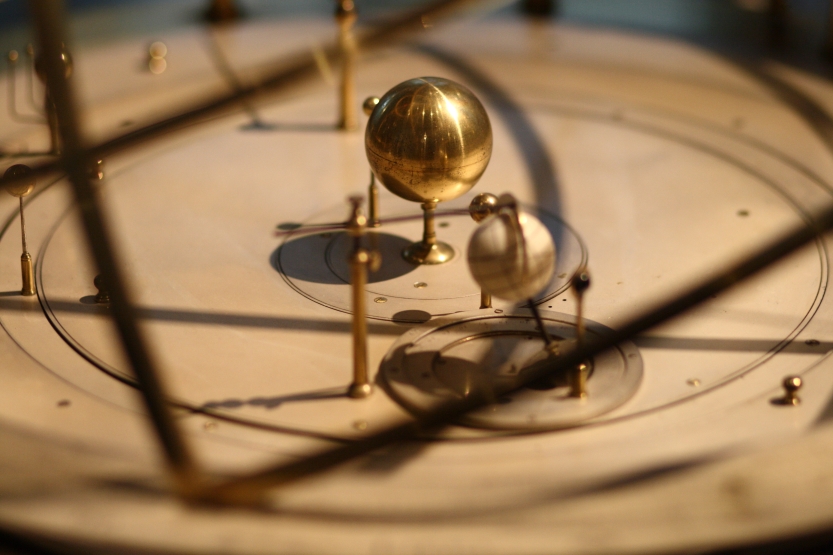While some of my friends were stuck in nightmarish Art Basel Miami traffic earlier this month, I was stuck in my own mind. It all started with the seventh episode of the fascinating second season of Fargo. In it, suave hitman Mike Milligan, delightfully portrayed by Bokeem Woodbine, philosophizes about the nature of a revolution. He makes a point of how amusing it is that on Earth the word revolution is used to signify great change, while in astronomy it represents a 360-degree course. When the course is that of the Earth around the Sun, this is a year. And being the end of the year, there you have it. What’s in a year?
In a year there are moments of happiness and sadness, kisses and hugs, hellos and goodbyes, wins and loses, routine and unusual. There are also 365 days, or 8,760 hours, or 525,600 minutes, or 31,536,000 seconds. There are firsts and lasts. There is time.
A year is the orbital period of the Earth as it orbits around the Sun and, due to its tilt, sees the passing of the seasons. A calendar year, however, is an approximation of this period in a given calendar. The most widely used calendar in the world is the Gregorian calendar, introduced in 1582 by Pope Gregory XIII. It incorporates both 365-day long common years and 366-day long leap years. The average year length across the complete leap cycle is 365.2425 days. In astronomy, a Julian year is a unit of measurement of time and it is defined as 365.25 days of 86,400 seconds each.
Almost every four years we add an extra day to the calendar year to keep it synchronized with the astronomical year. This is not always the case, as the average year length across the complete leap cycle is slightly less than the Julian year. Over a period of four centuries, there is three-day offset between the two. Thus, the Gregorian calendar needs to remove three days over the course of four hundred years. This is done by removing February 29 in the years that are multiples of 100 but cannot be exactly divided by 400. It is not that convoluted when you think about it.
I have also wondered often how is that we do not celebrate the new year, for example, on the date of the winter solstice a few days earlier, or any other astronomically relevant date for that matter. Instead, our modern western celebration stems from the Romans and Janus, god of doorways and beginnings. Janus was fittingly depicted having two opposite faces, one looking back at the past and another one looking forward at the future.
When I was a kid, I did not care much about all this. Nevertheless, to me, a year was the most meaningful unit of time. As a kid, all I was looking for was my birthday and, maybe, Christmas. My life was not the hectic mess it is today, and my next birthday would never come early enough. Years were the infinite amount of time between one birthday and the next. Sure, sprinkled with my friend’s birthdays here and there, but never-ending nonetheless. Nowadays, my birthday catches me off guard sometimes, and if it was not for all those Facebook notifications, I could even forget. The busier our calendars are, the faster time seems to go. Similarly, the older we are, the lesser a year is worth. At age 3 a year is 33.3% of our life up to that point, but at age 30 it is only 3.3%. This might be why time seems to slip away so quickly as an adult.
Then, the question is, can we slow down time?
Neuroscientists have suggested that it takes our brains a while to process information when we receive a considerable new amount of it. The longer this takes, the longer it feels. Thus, by paying attention and actively noticing new things, we can slow down time. Do not simply do more, notice more. Just like when we were kids, when, as humble learners, everything seemed, and often was, new.
If I had to write down a new year resolution, this would probably be it. Although I would not call it a firm decision, I would call it an inspiring change. Instead of a resolution, I choose a revolution. And this is what I wish everyone reading this: notice more. I wish you all bring your awareness amplifier from ten up to eleven, in a very Spinal Tap fashion.
Sure, the Earth goes around the Sun, but as it so does, they both are moving through the Milky Way. They are never back at the same place. Thus, every revolution, whether inner or outer, signifies great change, the only constant in our lives.


Everyday is a new day and can be considered a birthday. #perception
LikeLiked by 1 person